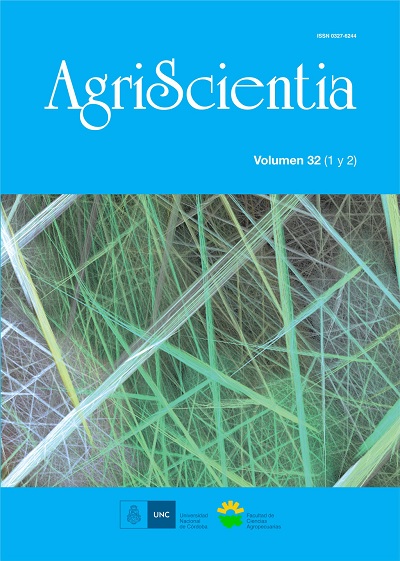Composting of feedlot manure with sawdust-woodshavings: process and quality of the final product
Main Article Content
Abstract
Composting of feedlot manure is a common practice in developed countries which aims at taking advantage of its value as reclamation and fertilizer as well as at reducing its negative impact on the environment. In Argentina manure is often applied without treatments of stabilization and hygienization. The aim of this work was to evaluate the effect of two rates of bulking agent (sawdust-woodshavings) and feedlot manure (1:1 and 2:1) on composting efficiency and final compost quality in experiments conducted as turning piles. Three piles per treatment were prepared at a pilot scale (3 m3each). The termophilic phase lasted 70-100 days and the content of faecal coliforms, potentially toxic materials and parameters of stability and maturity ? the latter being evaluated through water soluble C (WSC), ratio WSC/total N, ammonium, ratio ammonium/nitrate and germination index ? , indicated that after 4-6 months the product was innocuous, stable and mature. Pathogen and potentially toxic element contents were below the limits established by international laws. Compost 1:1 showed higher concentrations of total and extractable P than compost 2:1, and similar C and N values. When mixed with control soil both composts increased P and N availability and microbial respiration.
Article Details
How to Cite
Composting of feedlot manure with sawdust-woodshavings: process and quality of the final product. (2015). AgriScientia, 32(1), 55-65. https://doi.org/10.31047/1668.298x.v32.n1.16556
Issue
Section
Articles
How to Cite
Composting of feedlot manure with sawdust-woodshavings: process and quality of the final product. (2015). AgriScientia, 32(1), 55-65. https://doi.org/10.31047/1668.298x.v32.n1.16556





